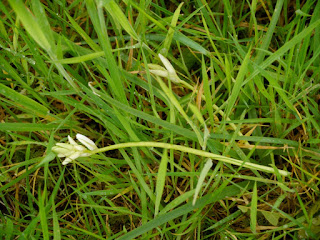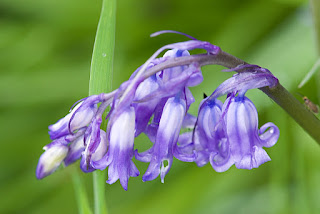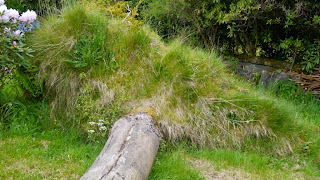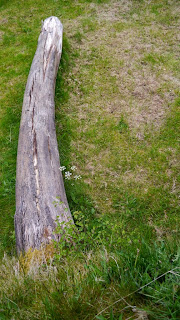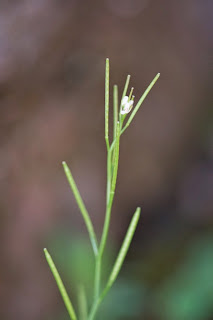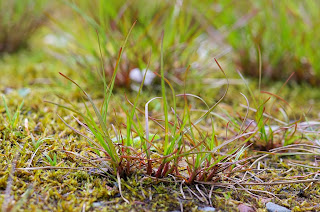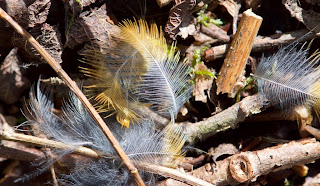 |
| NW side of back garden |
When we moved here nine years ago, someone who had lived here in the 1950s and 60s told me there had been a path up the northwest side of the back garden and that her grandfather had grown flowers to the side of it, some of which he sold at market. Other than a dip in the ground and a few old cultivated garden plants, (a pale-flowered fuchsia, some kind of cranesbill, and a sedum), hanging on under bushes, there was little evidence of paths. The garden had been neglected for about three decades and had become very overgrown.
 |
| Pale fuchsia |
 |
| Geranium leaves |
 |
| Sedum leaves under a Golden Cotoneaster |
Bees adore the flowers of the golden cotoneaster.
I rather like them too even when they've fallen off the bush.
Up near the top, where I was clearing spiraea and pruning grey sallow last autumn, the line of the old path became visible, marked by mosses, the original position of the sallow, and bricks.
 |
| old path edge |
In the photo to the left, where the path turned the corner can be seen. It led, a couple of metres to the right, to a gate in the fence apparently. There's no gate now, nor any evidence of one but I have found various bits of gate ironmongery lower down the garden.
I've also found bricks covered in moss or half buried along the left side of the old path line, including in the ground exposed by the uprooted eucalyptus tree.
I'm not planning to build the path anew but I will see what I can do to encourage the old plants. Trouble is, I also like the golden cotoneaster and the honeysuckle that is trying to grow through it. Last time I exposed the sedum to more sunshine and it flowered, a deer ate the flower. Hey ho. Such is the fate of cultivated flowers at the Boggy Brae. This is part of the reason why I'm now going for wild. Talking of which...
Cornsalad (Valerianella locusta) made its appearance yesterday and Common Sedge (Carex nigra). They are boggybrae wild plants for 2015 nos 59 & 60 respectively.

